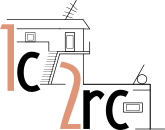About
The main idea of this proposal is to conduct an entangled research on two very different periods of Greek history, when two massive arrivals of refugee populations were characterized and managed as refugee “crises”. The first one is the fall of 1922 and the second the summer of 2015.
In the summer of 1922 the Greek army was defeated by the Turkish one and forced to leave Asia Minor in a disorderly fashion. Along with the army, a large part of the inhabitants of Asia Minor were forced to flee to Greece. The event was described as a “refugee shock”, at a time when the Greek state was in an economic and political crisis after ten years of wars, a “national schism”, and constant changes of national borders (Χατζηιωσήφ 2002). The newly founded Ministry of Welfare (1917) together with international organizations, such as the League of Nations and the Red Cross, put into place a humanitarian intervention in order to provide relief to more than one million Christians from the Ottoman Empire that settled in Greece between 1922-1924 as a result of the Lausanne Treaty.
In the summer of 2015, almost a million refugees fleeing from wars in Syria and Afghanistan arrived in Greece. For the majority of them Greece was their first stop en route to the countries of northern Europe. However, the signing of the EU-Turkey deal (March 2016) left more than 60.000 refugees trapped in Greece. Their arrival was described as a “refugee crisis” while the Greek State was also in an economic and political crisis: the 5 years of economic recession and Financial Supervision of Troika were coupled with a governing coalition comprised by Left and Right wing parties elected only a few months previously (Hadjimichalis 2017). The newly founded Ministry of Migration (2015), International Organizations like UNHCR, and hundreds of NGOs, put into effect a humanitarian operation in order to cover basic needs.
Although one can see some similarities, these two periods are not comparable in narrow terms. The reasons that had led the refugees to flee, the social, economic and geopolitical context on a global scale, as well as in the national and local settings, were very different. Furthermore, the refugees of 1922 were considered part of the “national body”, not only ideologically but also in terms of language and religion, and they arrived as part of a population exchange agreed in an International Treaty. The refugees of 2015 arrived in unregulated ways and in terms of language, religion and culture they were perceived as “others”. These differences will not be silenced throughout this research but thoroughly explored, providing the context of any analysis . Therefore, the project aims for a parallel study of the reception and the experiences of refugees in these two “crisis” periods, posing the same research questions in different contexts. The basic research questions will evolve around Housing and Economies as these issues seem to be among the most relevant in contexts of refugee “crises” while still understated in the literature of both of these periods. In order to unpack these questions, the research will evolve over multiple and interlocking spatio-temporal scales:
(a) from the ways the “crisis” was managed by state and non-state actors, (b) to the ways the refugee crisis and the refugees themselves were portrayed in the media discourses, (c) to the transformations the arrival and settlement brings to local settings and, lastly, (d) to the everyday life grassroots practices of the refugees who try to rebuild their livelihoods.
In the Synthesis period, through collaborative work, the research team will analyze the entanglements of these two periods, trying to juxtapose the research findings and revisit the basic concepts of the research.
